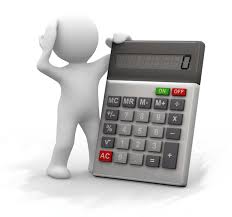Teaching math to a child with Attention Deficit Hyperactivity Disorder (ADHD) can be difficult. Children with ADHD or ADD tend to have trouble focusing and often act impulsively when frustrated. Trying to deal with new math methods tends to create a high frustration level for many people and, to an ADHD child, frustration may make math instruction harder to remember and multi-step problems difficult to solve. Teachers who work with ADHD students will benefit from using specific strategies and clear instructions to help make concepts and procedures more understandable to their students.
Here are 10 tips to help organize the task of teaching math to ADHD kids:
- Start with the Basics – Remember that some ADHD students may need help in recognizing numbers and writing numbers as well as recognizing and working with addition, subtraction and multiplication problems.
- Adjust your teaching style to your ADHD student’s learning style – Focus on what interests your child and how those interests might be used to make learning math easier and more fun.
- Use props to show how to work with the numbers – A basic example would be using objects to represent the numbers one and two and then showing the student that, when you put them together, they add up to three.
- Provide a variety of work scenarios – If you are homeschooling more than one ADHD student, perhaps start by teaching a brief math lesson that is related to the next assignment. Then split the class into small groups to work together on the problems, coming back together as a full class to talk about various solutions to the problems.
- Don’t give multi-step directions for math assignments – Give them one step at a time. Either create a checklist for the student or ask them to get new directions from you as they complete each individual step.
- Create smaller assignments – A worksheet with 100 math problems may overwhelm someone with ADHD while 10 worksheets with 10 problems each, distributed over time, might not be quite so daunting.
- Assist the ADHD student in dissecting math problems – Read the problems out loud. Point out important words and terms. If necessary, explain the problem using different words. Ask questions to make sure instructions are clearly understood.
- Include structure in math work assignments – Always explain what will happen in relation to work assignments. Write the steps necessary to complete the assignment on the board. As part of the structure, include a final review that allows the ADHD student to review the lesson, discuss answers and verbalize what was learned.
- Do not assign a time value to completion of a math assignment – The pressure of a deadline may trigger an anxiety reaction in ADHD students. You may be able to suggest a more “open ended” timeframe or ask your student(s) to tell you how much time they would like to have to finish the assigned work.
- Practice – Repeat math basics and instructions often. Everything hinges on the student understanding how numbers work and what is required of them.
Students with ADHD are often over-stimulated when it comes to math and other classroom work. This over-stimulation can cause a strong sense of being overwhelmed by everything that is going on around them. The “Ten Tips” outlined above are offered to assist homeschool teachers in increasing personal self-esteem and math learning capacity for their ADHD students.

